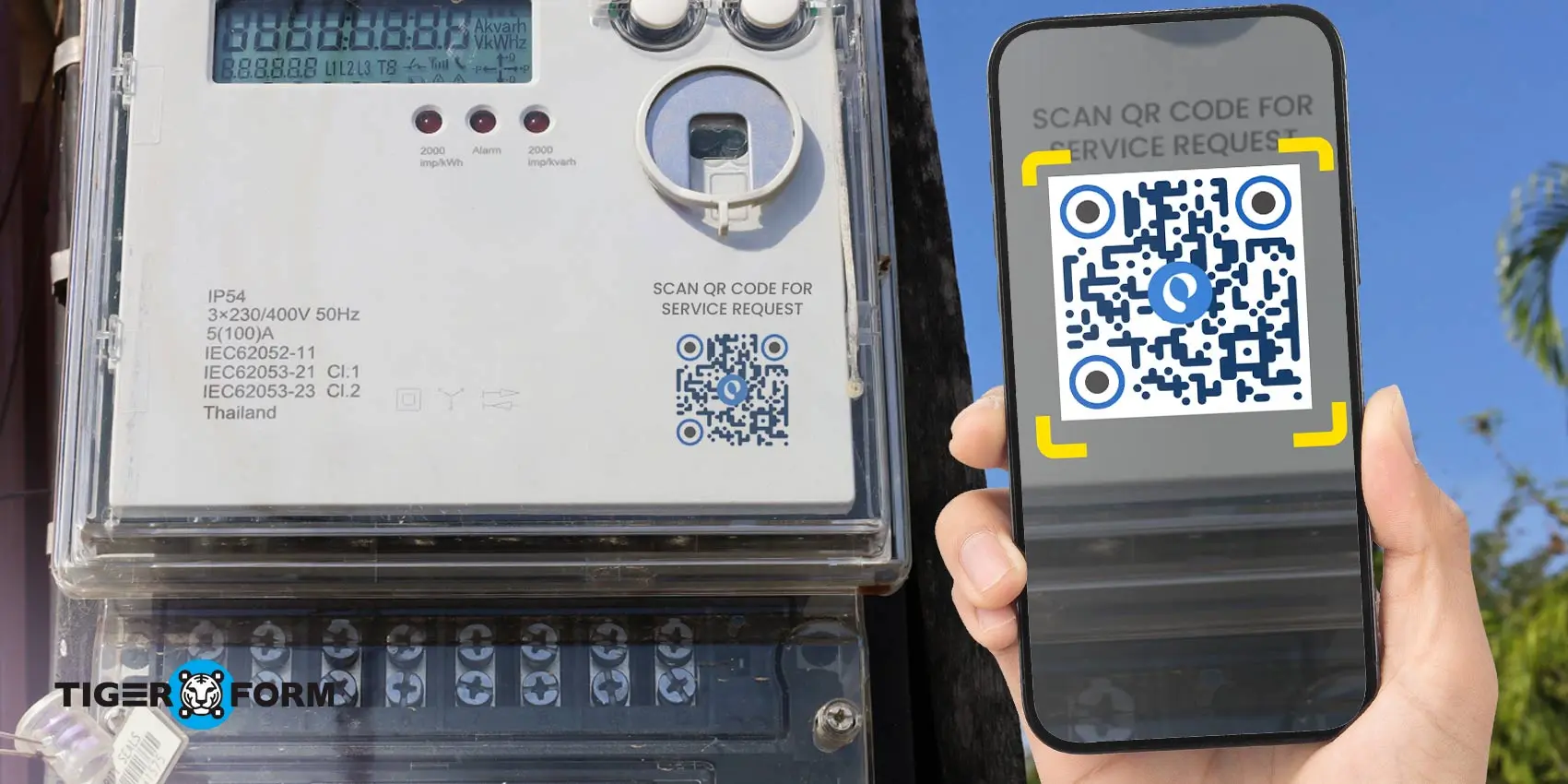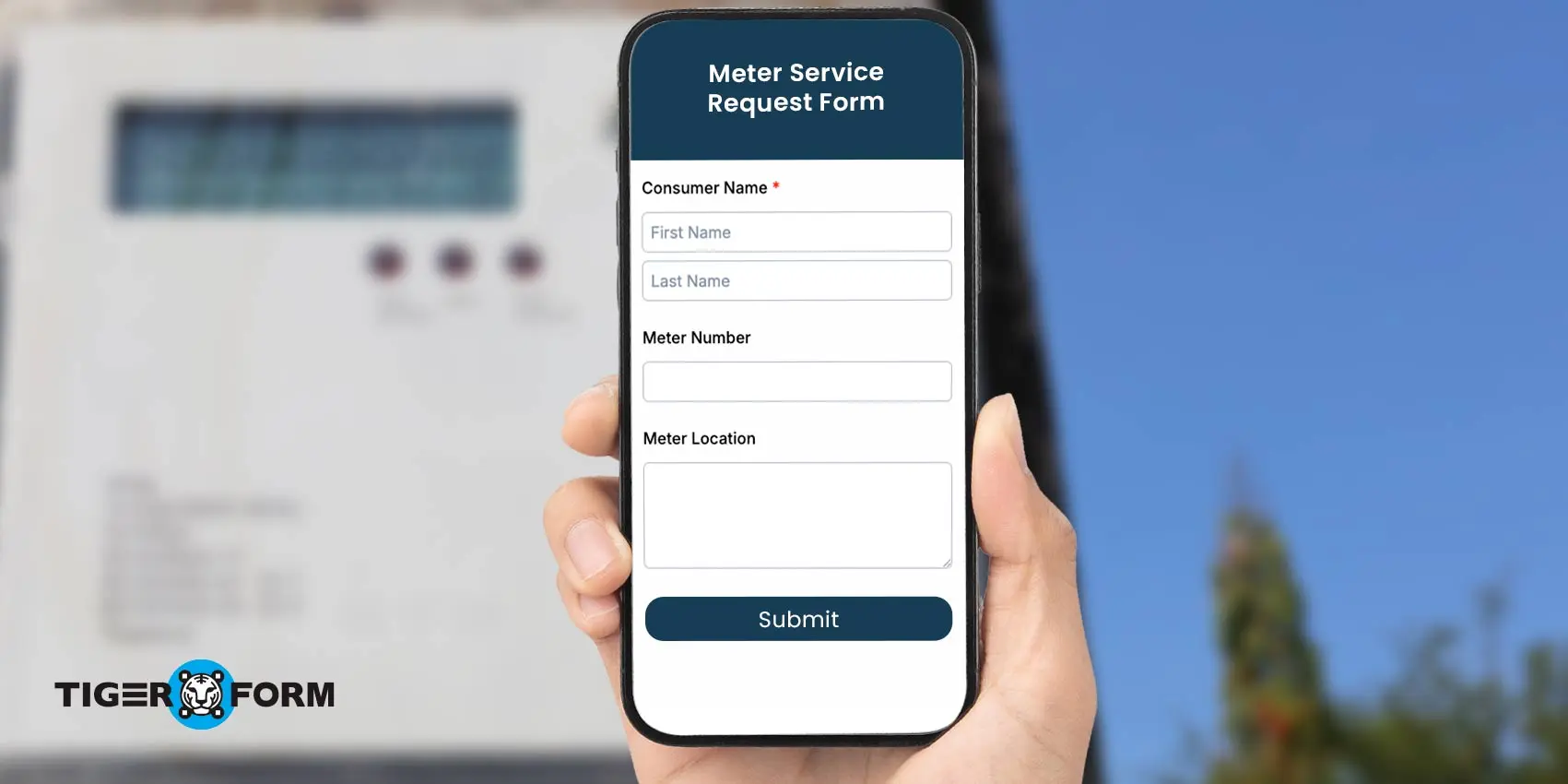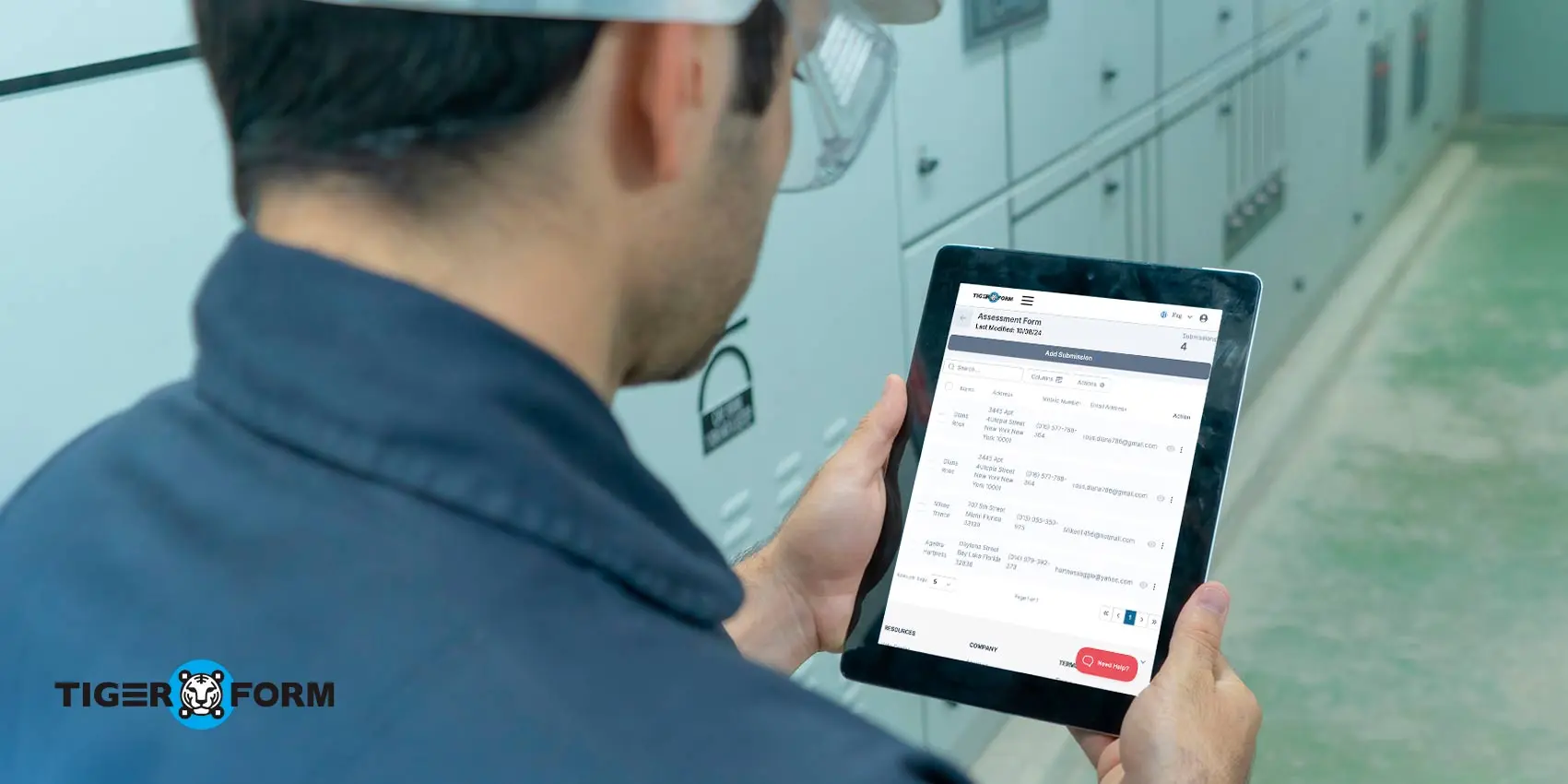
A well-designed service request form for utilities ensures seamless communication between customers and service providers. Many utility companies still rely on outdated, manual processes that lead to inefficiencies, delays, and customer frustration. Lengthy forms, unclear instructions, and slow processing times can significantly impact the overall customer experience.
According to a 2020 Harvard Business Review survey, 62% of utility leaders identified improving the customer experience as a top business priority, ranking it ahead of increasing revenues, organizational agility, and cost reductions.
One of the best ways to enhance the customer experience is by streamlining the service request process with QR code forms. These forms offer real-time data capture and faster resolution times, helping utility companies reduce costs while boosting customer satisfaction.
Let’s explore how optimizing the service request form for utilities with QR codes can revolutionize service efficiency and enhance the overall customer experience.
What is a service request?
A service request in the context of utility companies means a communication from the customer to the company regarding a specific service requirement. Following are some of the issues that will help you to understand what is a service request:
- Requests for new connections, disconnections after moving places, temporary service suspension for renovation, or other causes.
- Customers also make service requests when their meter malfunctions to get it repaired as soon as possible.
- Sometimes, customers have concerns about the accuracy of their meter readings or need help submitting them.
- Discrepancies or inaccuracies in the bills can prompt customers to make a service request for adjustment or clarification of charges.
- Customers can also request an upgrade to their current plan or an inspection of their meter.
From paper to QR code forms
Gone are the times when utility companies had to rely on lengthy paperwork to get things done. Customers would need to call the company or fill in a lengthy service request form for utilities, which was time-consuming and produced a lot of paper waste.
The requests must be diverted to the concerned department for accurate resolution, another step in this complex process. Consumer expectations have changed significantly since COVID-19, with 68% expecting the company to have a more extensive digital footprint.
Modern technology, like utilities QR Code, has resulted in a significant shift in service delivery. Utility QR codes now allow companies to create service request forms that customers can submit online for easier tracking, offering quick resolution and reducing the amount of paperwork.
With the rise of digital form solutions, utilities can streamline data collection and automate processes, making service requests more efficient. This transition from traditional paperwork to a digital framework has been a turning point for the energy industry and will continue to change how utilities resolve issues.
What is a form QR code?
Form QR code is the digital version of the traditional paper form used by utility companies for receiving and analyzing service requests. They have predefined fields or boxes that customers fill in with their accurate information and send to utilities. Usually, the information boxes are about names, addresses, service types, and the like. These forms are designed using a modern form creator with QR capabilities.
The utility service request form allows for efficient request processing. It’s also more secure than its paper counterparts, ensuring every service request reaches the utility without compromising user privacy. Given its convenience and efficiency, it is no wonder it has become the go-to choice for many utilities that want to streamline their data collection method and process.
Benefits of using a service request form for utilities

Implementing a QR utility request form can bring several benefits, from enhancing operations to improving customer satisfaction. Exploring the details and understanding how these benefits work and reshape the utility-customer relationship is crucial.
Operational streamlining
One of the utility companies’ most significant challenges is managing several service requests promptly and efficiently. A utility QR code form can resolve that problem by streamlining operations. Customers can simply tap a button and request a service from their smartphone. They don’t have to call the company and arrange elaborate paperwork, which results in faster service response times.
Enhanced customer satisfaction
Instead of filling out loads of physical papers, customers can now simply scan the QR code to open online forms for utilities service requests and fill in the required entries. It ensures a customer-friendly and technologically enhanced request mechanism that customers can perform anywhere, at any time. Customer satisfaction is so critical that 81% are willing to pay more for a better experience.
Imagine that a customer is already occupied when moving places and just needs to click a few times on their smartphone to make a request. Customers and companies both win in this scenario, resulting in a significant improvement in service quality.
Cost control
Google Form QR Codes are great for reducing the paperwork utilities that the customers have to deal with and minimizing costs to enhance the bottom line. By switching to a digital solution, utilities don’t need to print loads of paper that might not even be fully used.
There is no such problem with QR forms because you can create as many copies of your digital forms as you like without spending a single penny. Utilities can analyze how much money they can save by switching to a digital service request platform.
Improved data security and compliance
Like any other company, utilities must adhere to government industry standards and regulations. It is not just about following some standards. Business success depends on how seriously a company takes data security and other industry standards. On average, a data breach costs a company $4.45 million, a significant number.
Using a QR service request form for utilities is a step in the right direction because it protects user data by eliminating paperwork that could get lost or damaged in transit. Similarly, when utilities implement strict security protocols for their QR forms, they prevent hacking and other unauthorized access. They can instantly access all the service requests, user activity, and more to meet regulatory standards.
QR code deployment strategies for utilities
QR codes offer many benefits for both customers and utility companies, but their successful implementation requires careful consideration. So, let’s discuss some solid QR code deployment strategies for utilities:
User adoption
If a utility company adopts QR code forms, it must educate users about this development. Channels like social media and email newsletters can help utilities reach clients.
Getting user feedback through focus groups, surveys, and feedback forms is equally important to understand their challenges. After collecting the input, utilities should analyze it and modify their service accordingly.
Testing and training
Run the QR codes and their forms through multiple tests to ensure they work and integrate perfectly with the current system. For instance, utilities should test their code across various devices, such as smartphones, tablets, and operating systems. Similarly, they should test the performance of their system on both WiFi and cellular networks for an accurate assessment.
The customer care department should also receive relevant training regarding the QR system. They should thoroughly understand how QR codes work and review a sample service request form to get familiar with the format used in the forms. They should also be able to troubleshoot relevant issues resulting from form submissions and use QR code data to enhance customer interactions.
Integration with the current system

Before switching to the QR service request form for utilities, companies rely on the traditional request system of calls and paperwork. It is critical that the new system integrates perfectly with the older one and that customer information, like account details and addresses, is populated correctly in the QR form.
To ensure accuracy, an information sheet can be used to organize and verify customer details before they are transferred into the new system. When a customer makes a service request, the CRM system should automatically alert the utility company so that both the utility company and the customer receive real-time status updates.
Security concerns
Utility companies handle a lot of customer data, so they must be vigilant about protecting private user information. To protect data transmission between QR codes and the utility’s servers, utilities should implement robust HTTPS protocols. Since encryption scrambles information, unauthorized parties cannot read or comprehend it.
The following rules and regulations, such as GDPR (General Data Protection Regulation), ensure secure data handling. With that, utilities should communicate to customers how they collect, store, and use their data in a detailed privacy policy. It builds trust and transparency among both parties and ensures customers trust the utility company with their data.
Case studies of QR code adoption in the utility sector
Mobile-friendly solutions, like QR-powered billing, make utility management easier and more efficient. For example, the British Government now requires all energy bills to include a QR code.
When scanned, the code takes customers to their online account, where they can view a detailed e-bill instantly. This paperless approach removes the need to visit payment centers just to check fees, saving time for users and reducing costs for providers.
A similar system was introduced in India’s Tiruppur district, where rural customers often faced long trips to pay their bills. Over 5,000 households received QR code stickers on their bill cards, allowing them to pay from home.
The change cut travel time, lowered expenses, and made payments more accessible, especially for those in remote areas. The same technology could potentially simplify service requests and meter reading,s too.

Enter a new era of handling service requests using QR codes
Utility companies serve millions of customers worldwide, meaning they must handle thousands of service requests. Manual handling is no longer the right approach, as it requires extensive resources and achieves way less than modern technology can. Today, QR code solutions can completely change how utility companies handle customer service requests.
Customers who need to fill out an extended service request form for utilities can simply use digital forms to make service requests and get work done quickly. Utility companies should use a quality form builder like Form QR Code to process digital service requests efficiently. Users can easily scan the QR codes using smartphones, which means quick and easy access to service request forms.
As a result, utility companies are instantly notified who requires service at a particular location. So, start using Form Builder for service requests today and generate effective QR codes for your utility company.
FAQs
What is a service request form?
A service request form is a document (digital or paper) used to formally request assistance, repairs, or services from a company or organization. It ensures requests are tracked and addressed efficiently.
What kinds of services fall under utilities?
Utility services cover essential resources needed for daily operations, typically provided by public or private companies. These include services regarding repairs or adjustments on electricity, water, and gas.
Additionally, waste management services and telecommunications are also considered utility services. To streamline issue reporting, companies often provide an outage report form for utilities to report disruptions and request assistance quickly. These services are fundamental for maintaining homes, businesses, and public infrastructure.
What are the main fields in a service request form?
Common fields include:
- Attachments (photos, documents)
- Requester’s name & contact info
- Date of request
- Service type (e.g., plumbing, electrical)
- Location/Address
- Description of issue
- Priority level (urgent, routine)
- Preferred resolution time
